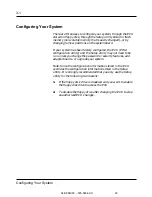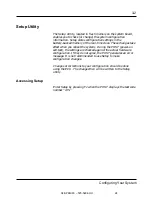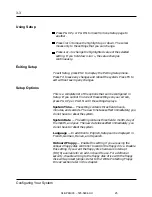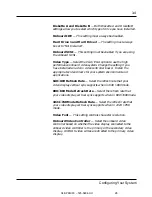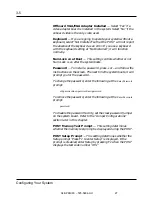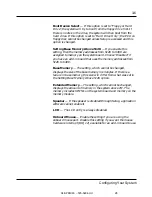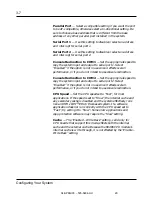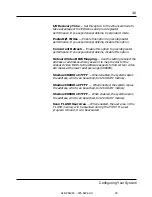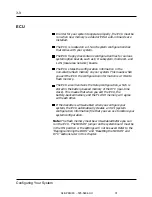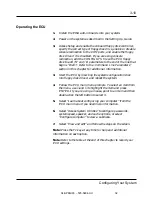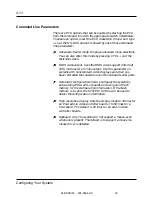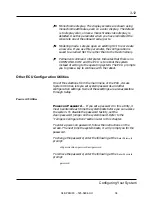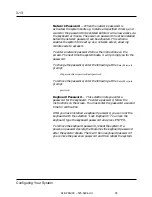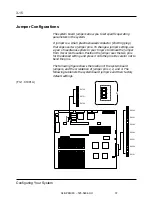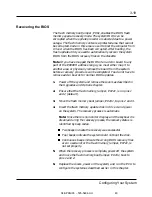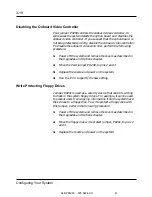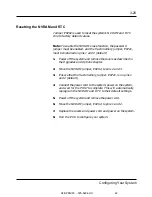
Parallel Port — Select a compatible setting if you want the port
to be AT-compatible, otherwise select a bi-directional setting. Be
sure to choose a base address that is different from the base
address of any other parallel port installed in the system.
Serial Port 1 — Use this setting to disable or select an address
and interrupt for serial port 1.
Serial Port 2 — Use this setting to disable or select an address
and interrupt for serial port 2.
Console Redirection to COM 1 — Set the appropriate speed to
copy the system input and output to serial port 1. Select
“Disabled” if the option is not in use since it effects overall
performance, or if you do not intend to use console redirection.
Console Redirection to COM 2 — Set the appropriate speed to
copy the system input and output to serial port 2. Select
“Disabled” if the option is not in use since it effects overall
performance, or if you do not intend to use console redirection.
CPU Speed — Set the CPU speed set to “Fast”, for most
applications. If the speed is set to “Slow”, the internal cache and
any secondary cache is disabled and the system effectively runs
like an 8MHz IBM
®
EISA/ISA-based system. If a software
application does not run correctly with the CPU speed set to
“Fast”, try setting it to “Slow”. Some older applications and
copy-protection software may require the “Slow” setting.
Cache — The “Enabled – Write Back” setting, valid only for
CPU boards that support this mode, effects both the internal
cache and the external cache. Because the 80486 CPU module’s
internal cache is write through, it is not effected by the “Enable –
Write Back” setting.
04/APRIL/93 – 595-5484-UU
29
3-7
Configuring Your System









